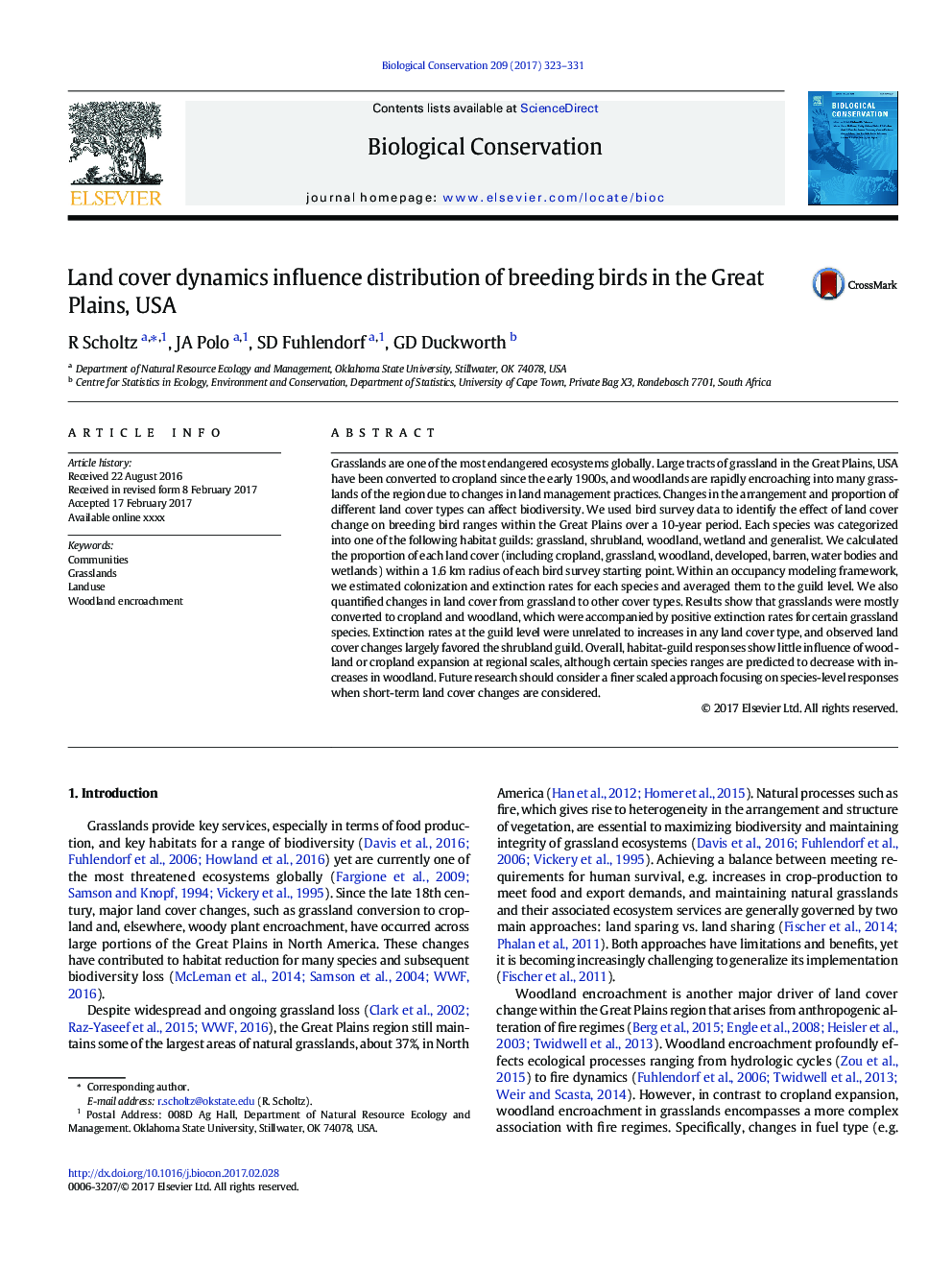| Article ID | Journal | Published Year | Pages | File Type |
|---|---|---|---|---|
| 5743336 | Biological Conservation | 2017 | 9 Pages |
Abstract
Grasslands are one of the most endangered ecosystems globally. Large tracts of grassland in the Great Plains, USA have been converted to cropland since the early 1900s, and woodlands are rapidly encroaching into many grasslands of the region due to changes in land management practices. Changes in the arrangement and proportion of different land cover types can affect biodiversity. We used bird survey data to identify the effect of land cover change on breeding bird ranges within the Great Plains over a 10-year period. Each species was categorized into one of the following habitat guilds: grassland, shrubland, woodland, wetland and generalist. We calculated the proportion of each land cover (including cropland, grassland, woodland, developed, barren, water bodies and wetlands) within a 1.6Â km radius of each bird survey starting point. Within an occupancy modeling framework, we estimated colonization and extinction rates for each species and averaged them to the guild level. We also quantified changes in land cover from grassland to other cover types. Results show that grasslands were mostly converted to cropland and woodland, which were accompanied by positive extinction rates for certain grassland species. Extinction rates at the guild level were unrelated to increases in any land cover type, and observed land cover changes largely favored the shrubland guild. Overall, habitat-guild responses show little influence of woodland or cropland expansion at regional scales, although certain species ranges are predicted to decrease with increases in woodland. Future research should consider a finer scaled approach focusing on species-level responses when short-term land cover changes are considered.
Related Topics
Life Sciences
Agricultural and Biological Sciences
Ecology, Evolution, Behavior and Systematics
Authors
R Scholtz, JA Polo, SD Fuhlendorf, GD Duckworth,
